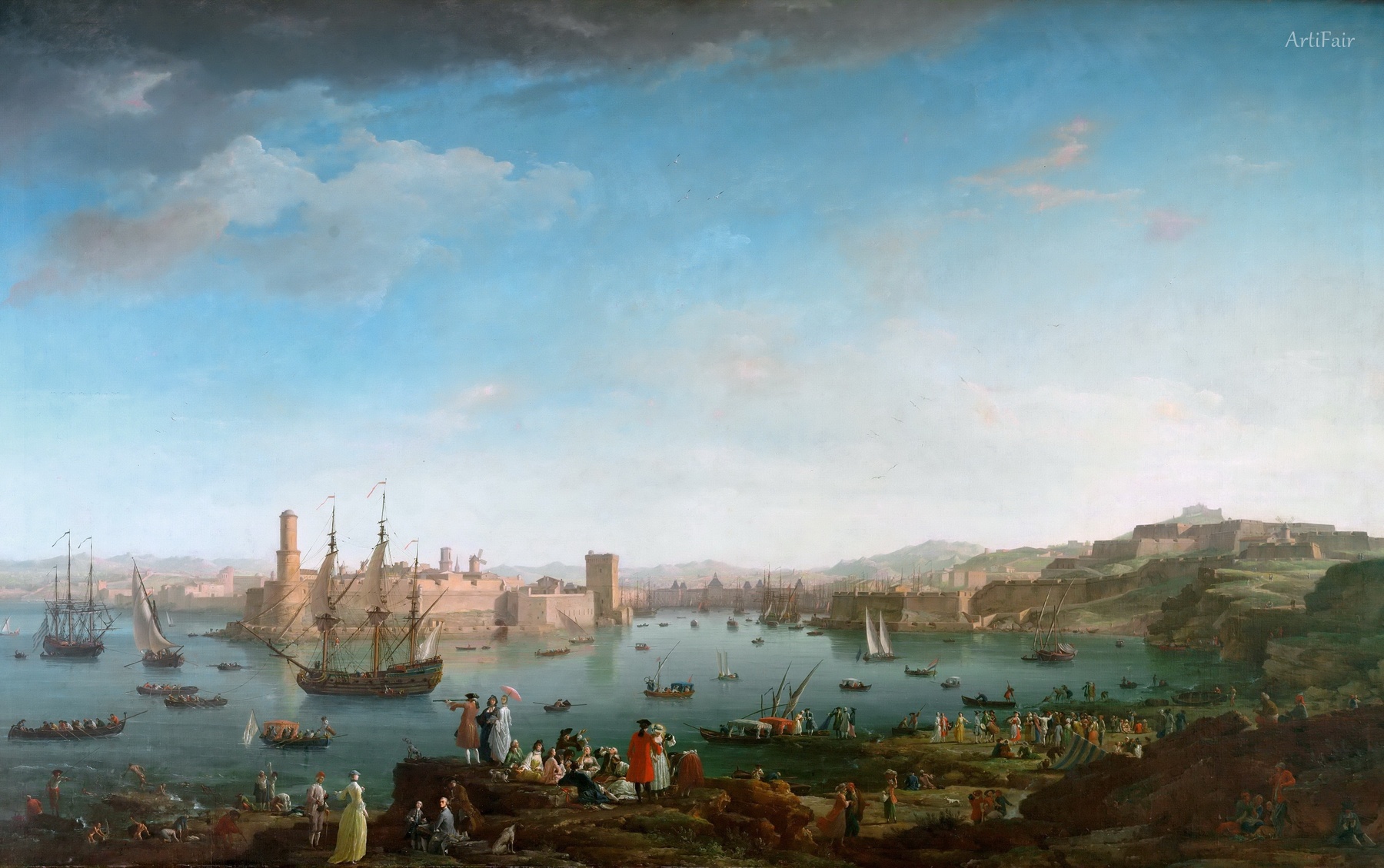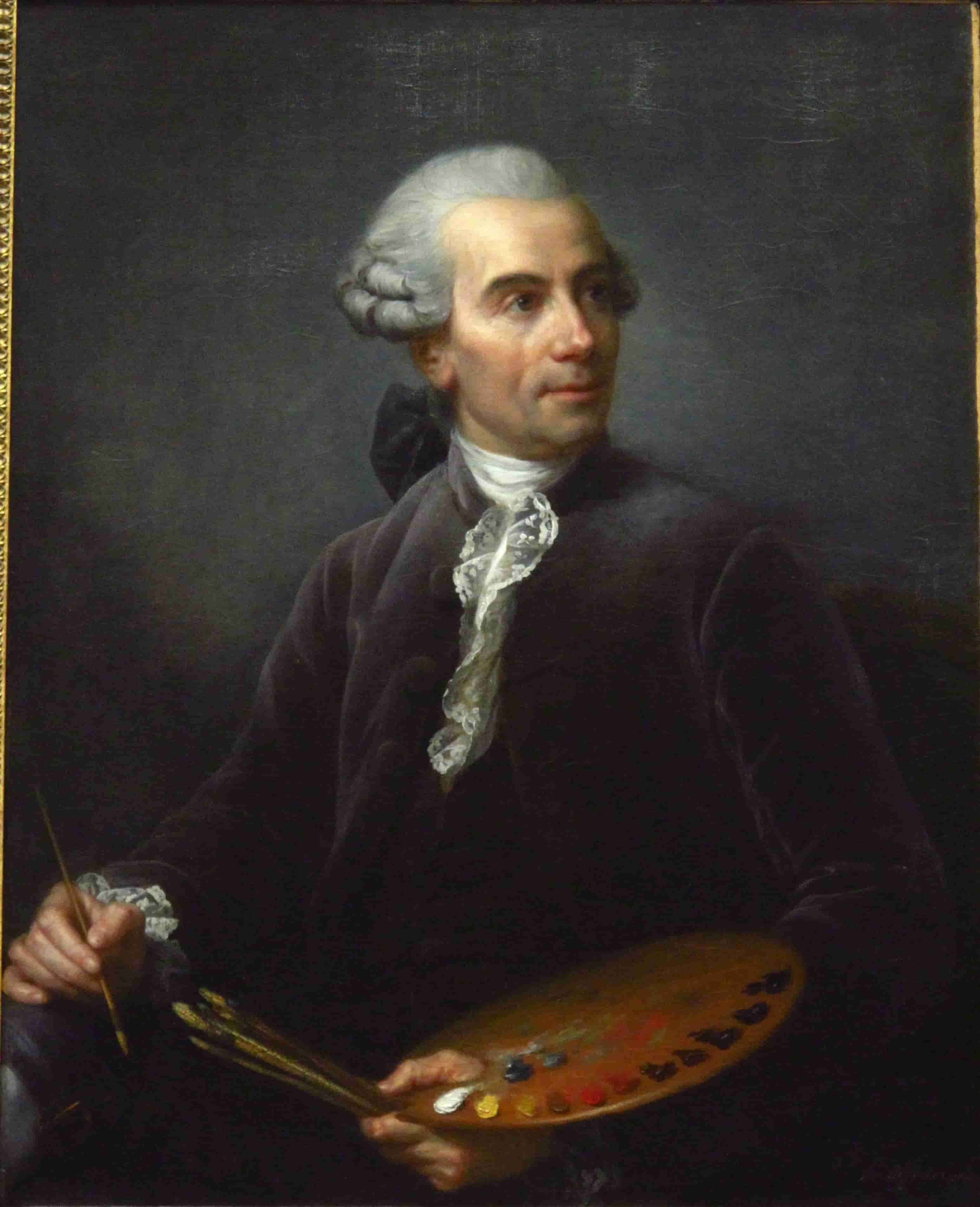

Claude Joseph Vernet
FR
67
Artworks
1714 - 1789
Lifespan
Artist Biography
Claude-Joseph Vernet, born in Avignon on August 14, 1714, was a preeminent French painter whose dramatic seascapes and serene landscapes captured the imagination of 18th-century Europe. His artistic journey began under the tutelage of his father, Antoine Vernet, a skilled decorative painter. By the age of fourteen, young Claude was already assisting in significant aspects of his father's work. However, his ambitions extended beyond decorating sedan chairs, leading him to leave Avignon for Rome in 1734. The maritime experiences encountered during his voyage, particularly the sight of whales off Marseille and the journey to Civitavecchia, profoundly influenced his artistic direction, igniting a lifelong passion for marine subjects.
Upon arriving in Rome, Vernet immersed himself in the city's vibrant artistic milieu. He sought out masters of seascape and landscape painting, entering the studios of Bernardino Fergioni, a specialist in whale painting, and Adrien Manglard, a renowned marine landscapist. Both Manglard and Fergioni played crucial roles in initiating Vernet into the intricacies of seascape painting. During his two decades in Rome (1734-1753), Vernet diligently studied the works of earlier masters like Claude Lorrain, whose luminous and atmospheric qualities deeply resonated with him, and Salvator Rosa, known for his dramatic and picturesque scenes. He also likely encountered and was influenced by Giovanni Paolo Panini, a contemporary Roman topographical painter. This period was formative, allowing Vernet to develop a style that blended meticulous observation of nature with a conventional, yet refined, design sensibility. His depictions of seaports, storms, calms, and moonlit scenes gained him considerable popularity, especially among English aristocrats undertaking the Grand Tour. In 1745, he married an Englishwoman, Virginia Parker, whom he met in Rome.
Vernet's distinctive style was characterized by his ability to render atmospheric effects with unusual pictorial skill. He masterfully integrated human figures into his landscapes, making them integral components of the composition rather than mere accessories. While his work drew on natural themes, it maintained a decorative quality, avoiding overt sentimentality or emotionalism. He famously stated, "Others may know better how to paint the sky, the earth, the ocean; no one knows better than I how to paint a picture." His style remained relatively consistent throughout his career, often combining a Claude Lorrain-esque sense of harmony with a keen attentiveness to the nuances of light and weather. Legend even tells of him having himself tied to a ship's mast during a storm to experience its full fury, a testament to his dedication to capturing the raw power of nature.
In 1753, Vernet was recalled to Paris by royal command. King Louis XV commissioned him to paint a monumental series depicting the seaports of France. This prestigious project, known as "Ports de France," cemented his reputation and remains his most celebrated achievement. Between 1754 and 1765, he completed fifteen of the planned twenty-four large canvases (now housed in the Louvre and the Musée National de la Marine). These works are remarkable records of 18th-century French maritime life, showcasing bustling harbors with meticulous detail and atmospheric depth. "The Port of Rochefort" (1763) is particularly lauded for its "crystalline and atmospherically sensitive skies" and its vivid portrayal of port activities. During this period, he also became a member of the French Royal Academy and continued to exhibit regularly. He also created series like "Four Times of the Day" (1757).
Throughout his life, Vernet frequently returned to Italian themes, as evidenced by later works such as "A Beached Whale." His keen observation of natural effects, especially the play of light on water and in the sky, and his ability to convey dramatic weather conditions like storms and shipwrecks, made him one of the leading landscape painters of his era, alongside Hubert Robert. His influence extended to other artists, including Richard Wilson, whom he reportedly encouraged to pursue landscape painting. Despite his immense success, some critics suggest a decline in his later work due to overproduction. Vernet's artistic legacy was continued by his son, Antoine Charles Horace (Carle) Vernet, and his grandson, Horace Vernet, both of whom became distinguished painters. Claude-Joseph Vernet died in his lodgings in the Louvre on December 3, 1789, leaving behind a rich body of work that continues to be admired for its technical brilliance and evocative power.